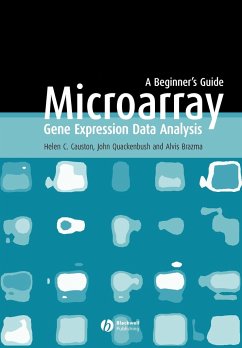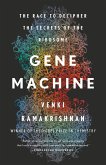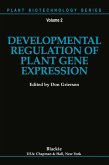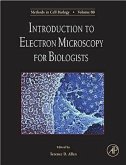This guide covers aspects of designing microarray experiments and analysing the data generated, including information on some of the tools that are available from non-commercial sources. Concepts and principles underpinning gene expression analysis are emphasised and wherever possible, the mathematics has been simplified. The guide is intended for use by graduates and researchers in bioinformatics and the life sciences and is also suitable for statisticians who are interested in the approaches currently used to study gene expression.
Microarrays are an automated way of carrying out thousands of experiments at once, and allows scientists to obtain huge amounts of information very quickly
Short, concise text on this difficult topic area
Clear illustrations throughout
Written by well-known teachers in the subject
Provides insight into how to analyse the data produced from microarrays
Microarrays are an automated way of carrying out thousands of experiments at once, and allows scientists to obtain huge amounts of information very quickly
Short, concise text on this difficult topic area
Clear illustrations throughout
Written by well-known teachers in the subject
Provides insight into how to analyse the data produced from microarrays
"Quite a few recently published books discuss analysis of microarray gene expression data for beginners. Microarray Gene Expression Data Analysis ... is arguably the best of its kind in this regard." Terry Speed, The Walter & Eliza Hall Institute of Medical Research, Nature Cell Biology, December 2003
"Overall this is an excellent book, it is well referenced and, to my mind, covers the vast majority of issues an experimenter needs to consider when venturing into the world of microarray data analysis. The book fills a clear gap in the field, providing a rigorous overview of the often confusing .... data analysis issues that most books on microarrays avoid or treat in a cursory way. I would say it is essential reading for any laboratory or researcher active in this rapidly evolving field and is recommended for the mathematician or statisitican who is interested in the field or who has been persuaded by their biologist colleague to help them with their analysis." Steven Russell, University of Cambridge, Genetical Research, February 2003
"Anyone wishing to gain a basic understanding of microarray gene expression studies will come away enriched ... A good and accessible entry point for any biologist who is interested in getting an overview about how to perform microarray gene expression studies." D.C.Jamison, George Mason University, Heredity, June 2004
"Overall this is an excellent book, it is well referenced and, to my mind, covers the vast majority of issues an experimenter needs to consider when venturing into the world of microarray data analysis. The book fills a clear gap in the field, providing a rigorous overview of the often confusing .... data analysis issues that most books on microarrays avoid or treat in a cursory way. I would say it is essential reading for any laboratory or researcher active in this rapidly evolving field and is recommended for the mathematician or statisitican who is interested in the field or who has been persuaded by their biologist colleague to help them with their analysis." Steven Russell, University of Cambridge, Genetical Research, February 2003
"Anyone wishing to gain a basic understanding of microarray gene expression studies will come away enriched ... A good and accessible entry point for any biologist who is interested in getting an overview about how to perform microarray gene expression studies." D.C.Jamison, George Mason University, Heredity, June 2004








